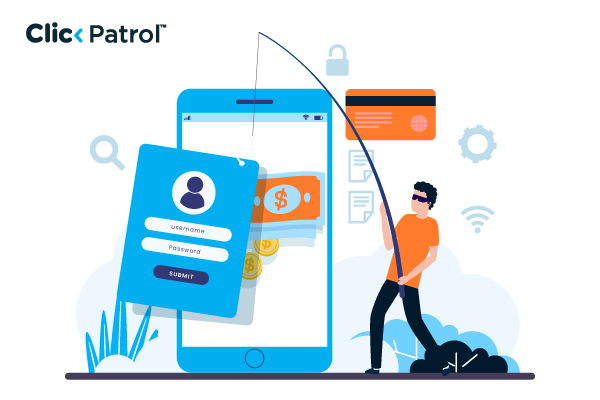
How To Block Proxy Traffic From Clicking On Your Google Ads
Abisola Tanzako | Jul 12, 2023

Fraudsters online must be secretive if they want to constantly get away with fraudulent activities, such as web scraping, ad jacking, etc. To beat the multiple security checks that various website owners put in place to protect their websites, fraudsters are tasked with mimicking the behaviour of a genuine site visitor.
Table of Contents
One famous way fraudsters and hackers get this done is through a proxy, which helps them disguise their fraudulent identity, making their traffic look less suspicious and harmless. But proxies are not essentially malicious; real users who are not malicious will often use a proxy or VPN for online privacy protection.
How can a website owner tell if a proxy user on their website is a fraudulent visitor or a legitimate visitor? First, let’s understand the meaning of proxies, how they work, how to detect them, and ultimately how to block them. We will also talk about how fraudsters take advantage of proxies and how to know if proxy traffic on your website is valid or not.
Understanding The Term Proxy And Its Types
What Is A Proxy?
A proxy software tool acts as a middleman between different devices. A proxy has its IP address, meaning users can obfuscate their location and identity.
A proxy can be used for many purposes, such as gaining access to content from different countries, avoiding restrictions placed on particular regions, screening downloads, filtering web content, and providing anonymity. Certain kinds of proxy (e.g., VPN) provide a security gateway to corporate networks in the business world.
But of course, this tool, as you can imagine, has become invaluable to fraudsters and hackers. They leverage this tool to mask their fraudulent activities, making it difficult to catch them. For instance, one famous case study uses a proxy in a click fraud attack, where the IPA is constantly changed to mimic a genuine user’s click on an ad.
Kind Of Proxies
Although there are different kinds of proxy servers, such as transparent proxies, forward proxies, data centre proxies, etc., proxies are divided into three large umbrellas, which all the other kinds fit into. They are VPNs (Virtual Private Networks), CDNs (Content Delivery Networks), and web proxies.
VPN (Virtual Private Network)
A VPN (Virtual Private Network) is a common proxy that directs all network traffic to and from a specific device and encrypts the traffic. See a VPN as an encrypted tunnel where all incoming and outgoing traffic is secured. VPNs are used by business owners and personal users looking to secure the traffic happening on their sites and are keen on privacy, respectively. As usual, they are leveraged by fraudulent people who want to mask their fraudulent activities.
CDN (Content Delivery Network)
CDN (Content Delivery Network) is a group of proxy servers spread out across the internet to provide superior availability and performance compared to other singular servers. The Delivery Network is a highly widespread tool for genuine business reasons. For instance, a web owner has users in various locations who can use the Content Delivery Network to aid faster content delivery. Unfortunately, fake actors can hijack the CDN to commit malicious activities, such as delivering malware.
Web Proxy
A web proxy is also known as a public proxy. It is a server that provides a gateway between users and the broader internet. A web proxy also has its IPA (identified by your computer); when traffic goes to the internet, it is directed through the web proxy, which gets a response from a server and then directs the data back to your browser.
We have software and hardware web proxies. A cloud service provider hosts a software proxy, while the hardware is the physical server between your internet and your network.
How Do Fraudsters Take Advantage Of Proxies?
The primary reason why fraudsters, hackers, and botnets use proxies is to mask their identity and their location. Still, of course, we have more sophisticated fraudsters who do not just use them to mask their identity and location but for more complex uses that can cause a devastating effect.
For ad fraud, servers that have VPNs can direct traffic from click framing and botnets to a website mimicking genuine users through the rapidly changing IPAs. Proxies can also allow fraudsters to access specific desirable regions (such as Europe and North America) with high PPC rates, translating to high rewards for fraud.
The level of sophistication of this proxy use can vary. Some fraudsters use spoofing a US IPA, while others use residential proxy services to fake other details such as devices or networks. For instance, a browser originally from Asia could disguise itself as a mobile device with a 5G connection from America.
Looking at it from a business standpoint, a ‘casual’ proxy user can pose a significant issue. Proxies skew marketing data, prevent remarking efforts, and disrupt fingerprint browsers.
Are All Proxies Traffic Invalid?
As mentioned earlier, some people use proxies for justifiable reasons, and millions of people use them all across the world daily.
To properly categorize the proxy traffic on your webpage and protect your site from fraudulent traffic, it is best to categorize questionable and unidentifiable traffic under suspicious sources instead of blocking them out immediately. The truth is there are various reasons why a user will choose to use a proxy to hide their identity and location. Yes, the intention could be harmless, but if the user’s traffic isn’t allowed to convert because of the barrier, you have to either monitor or eventually block the traffic. Please note that even though you have no malicious anonymous traffic, using a proxy can skew ad data and provide misguiding information.
How To Detect And Block Proxy Traffic
So, how can you detect and block proxy traffic? Firstly, it is always best to identify whether proxy traffic is terrible and should be blocked or just suspicious traffic. To analyze customer traffic, there are a series of best practices to follow in determining what to do and how to handle proxy traffic best. These steps are best done with a detailed security platform but can still be done manually with a reasonable amount of time and effort.
Monitor Your Website’s Traffic
It is pertinent to monitor the domains of users accessing your site closely. If you receive unusually high clicks from an unusual location, that is a good sign that your ad campaign is targeted for fraud. When you notice this increase in usual traffic, search your server log for suspicious IPAs and add them to your block list.
Inspect The Packet Header For Suspicious Data
A skilled user can also inspect the packet header for supporting information. The information in the title is a lot, such as browser version, type, and OS. If you get a lot of clicks from the same IPA but a different browser or OS, then there is a high possibility that the IPA is a proxy and should be blocked or redirected depending on your use case or industry. If you intend to grant all proxy users free access to your website but want to keep fraudulent users out, you can search for giveaways like Linux use and outdated browsers to narrow your blocking.
Search For Misinterpretation
To identify further, search for areas where users misinterpret themselves. For instance, if it shows that a user is using a mobile device, the packet header indicates that it is a browser extension. It is safe to conclude that users are faking their information because mobile phones don’t use extensions.
All the abovementioned methods can help you identify whether proxy traffic has fraudulent intent or is just from a user who is particular about their online privacy. With this, you can adjust your block list accordingly.
Get Fraud Detection Software
All of the above methods can be very intense, and that is because manually trying to detect if proxy traffic is fraudulent or not can be very time-consuming and, in some extreme cases, may need help to provide a solution. To be intentional about getting malicious activities from your website, you need fraud detection software such as ClickPatrol that can do a comprehensive search on your website. This will help automatically detect and block every form of invalid traffic and provide you with extra insight into marketing analytics.
Good security software will help evaluate website traffic in real-time, identify if the traffic is genuine or suspicious, and take necessary actions to redirect or block the user.
Should You Block Proxy Traffic?
Blocking proxy traffic from clicking on your Google ads is crucial to ensuring the accuracy and effectiveness of your ad campaigns. Implementing the right strategies can help you prevent fraudulent clicks and preserve your ad budget. Utilizing tools like Google Analytics and third-party click fraud prevention services can assist in identifying suspicious IP addresses and blocking them. Additionally, geo-targeting can limit your ad exposure to specific regions, reducing the chances of proxy traffic interference. By actively monitoring and taking proactive measures, you can minimize the impact of proxy traffic and optimize the performance of your Google ads.





